Giulia Torcolacci
Scalable RIS-Aided Beamforming Strategies for Near-Field MU-MISO via Multi-Antenna Feeder
Aug 12, 2025Abstract:This paper investigates a modular beamforming framework for reconfigurable intelligent surface (RIS)-aided multi-user (MU) communications in the near-field regime, built upon a novel antenna architecture integrating an active multi-antenna feeder (AMAF) array with a transmissive RIS (T-RIS), referred to as AT-RIS. This decoupling enables coordinated yet independently configurable designs in the AMAF and T-RIS domains, supporting flexible strategies with diverse complexity-performance trade-offs. Several implementations are analyzed, including diagonal and non-diagonal T-RIS architectures, paired with precoding schemes based on focusing, minimum mean square error, and eigenmode decomposition. Simulation results demonstrate that while non-diagonal schemes maximize sum rate in scenarios with a limited number of User Equipments (UEs) and high angular separability, they exhibit fairness and scalability limitations as UE density increases. Conversely, diagonal T-RIS configurations, particularly the proposed focusing-based scheme with uniform feeder-side power allocation, offer robust, fair, and scalable performance with minimal channel state information. The findings emphasize the critical impact of UEs' angular separability and reveal inherent trade-offs among spectral efficiency, complexity, and fairness, positioning diagonal AT-RIS architectures as practical solutions for scalable near-field MU multiple-input single-output systems.
An Overview on Over-the-air Electromagnetic Signal Processing
Dec 20, 2024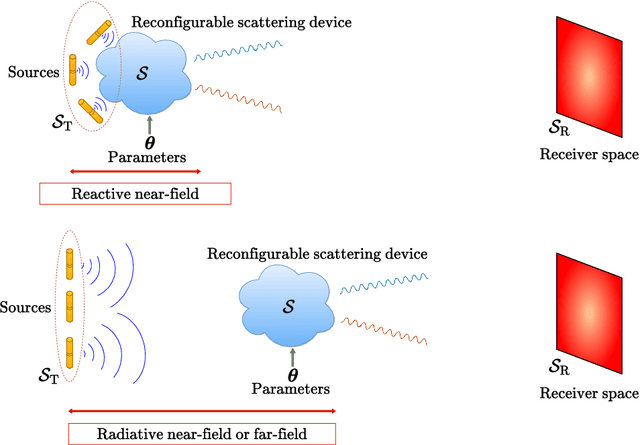
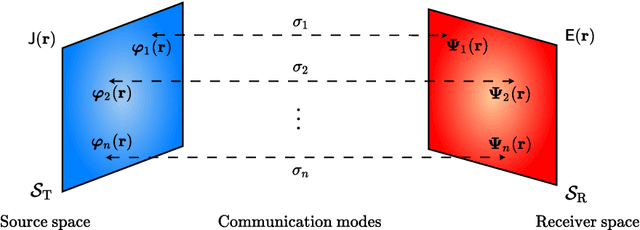
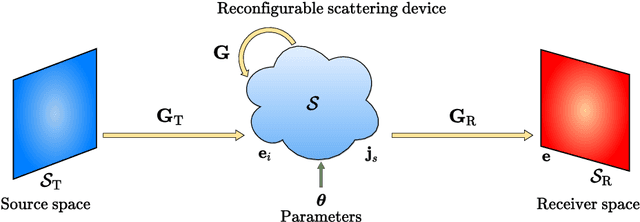
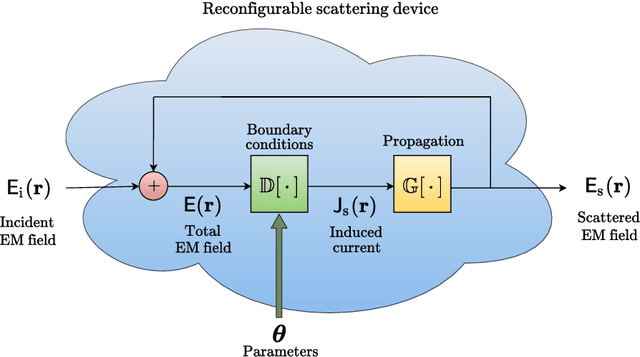
Abstract:This article provides a tutorial on over-the-air electromagnetic signal processing (ESP) for next-generation wireless networks, addressing the limitations of digital processing to enhance the efficiency and sustainability of future 6th Generation (6G) systems. It explores the integration of electromagnetism and signal processing (SP) highlighting how their convergence can drive innovations for 6G technologies. Key topics include electromagnetic (EM) wave-based processing, the application of metamaterials and advanced antennas to optimize EM field manipulation with a reduced number of radiofrequency chains, and their applications in holographic multiple-input multiple-output systems. By showcasing enabling technologies and use cases, the article demonstrates how wave-based processing can minimize energy consumption, complexity, and latency, offering an effective framework for more sustainable and efficient wireless systems. This article aims to assist researchers and professionals in integrating advanced EM technologies with conventional SP methods.
An Overview on Over-the-airElectromagnetic Signal Processing
Dec 19, 2024



Abstract:This article provides a tutorial on over-the-air electromagnetic signal processing (ESP) for next-generation wireless networks, addressing the limitations of digital processing to enhance the efficiency and sustainability of future 6th Generation (6G) systems. It explores the integration of electromagnetism and signal processing (SP) highlighting how their convergence can drive innovations for 6G technologies. Key topics include electromagnetic (EM) wave-based processing, the application of metamaterials and advanced antennas to optimize EM field manipulation with a reduced number of radiofrequency chains, and their applications in holographic multiple-input multiple-output systems. By showcasing enabling technologies and use cases, the article demonstrates how wave-based processing can minimize energy consumption, complexity, and latency, offering an effective framework for more sustainable and efficient wireless systems. This article aims to assist researchers and professionals in integrating advanced EM technologies with conventional SP methods.
Holographic Imaging with XL-MIMO and RIS: Illumination and Reflection Design
Dec 18, 2023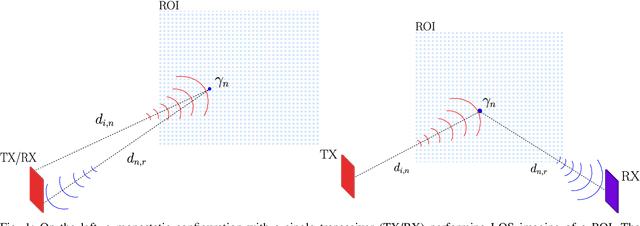

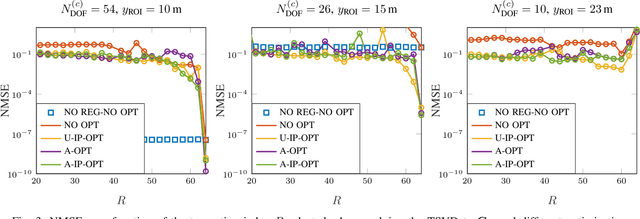
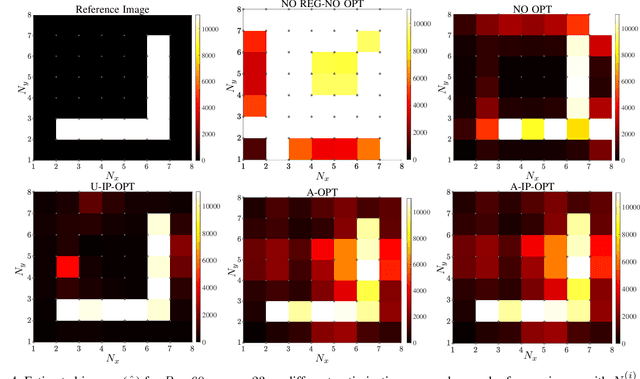
Abstract:This paper addresses a near-field imaging problem utilizing extremely large-scale multiple-input multiple-output (XL-MIMO) antennas and reconfigurable intelligent surfaces (RISs) already in place for wireless communications. To this end, we consider a system with a fixed transmitting antenna array illuminating a region of interest (ROI) and a fixed receiving antenna array inferring the ROI's scattering coefficients. Leveraging XL-MIMO and high frequencies, the ROI is situated in the radiating near-field region of both antenna arrays, thus enhancing the degrees of freedom (DoF) of the illuminating and sensing channels available for imaging, here referred to as holographic imaging. To further boost the imaging performance, we optimize the illuminating waveform by solving a min-max optimization problem having the upper bound of the mean squared error (MSE) of the image estimate as the objective function. Additionally, we address the challenge of non-line-of-sight (NLOS) scenarios by considering the presence of a RIS and deriving its optimal reflection coefficients. Numerical results investigate the interplay between illumination optimization, geometric configuration (monostatic and bistatic), the DoF of the illuminating and sensing channels, image estimation accuracy, and image complexity.
Holographic MIMO Communications exploiting the Orbital Angular Momentum
Apr 03, 2023Abstract:This study delves into the potential of harnessing the orbital angular momentum (OAM) property of electromagnetic waves in near-field and line-of-sight scenarios by utilizing large intelligent surfaces, in the context of holographic multiple-input multiple-output (MIMO) communications. The paper starts by characterizing OAM-based communications and investigating the connection between OAM-carrying waves and optimum communication modes recently analyzed for communicating with smart surfaces. Subsequently, it proposes implementable strategies for generating and detecting OAM-based communication signals using intelligent surfaces and optimization methods that leverage focusing techniques. Then, the performance of these strategies is quantitatively evaluated through simulations. The numerical results show that OAM waves while constituting a viable and more practical alternative to optimum communication modes are sub-optimal in terms of achievable capacity.
 Add to Chrome
Add to Chrome Add to Firefox
Add to Firefox Add to Edge
Add to Edge